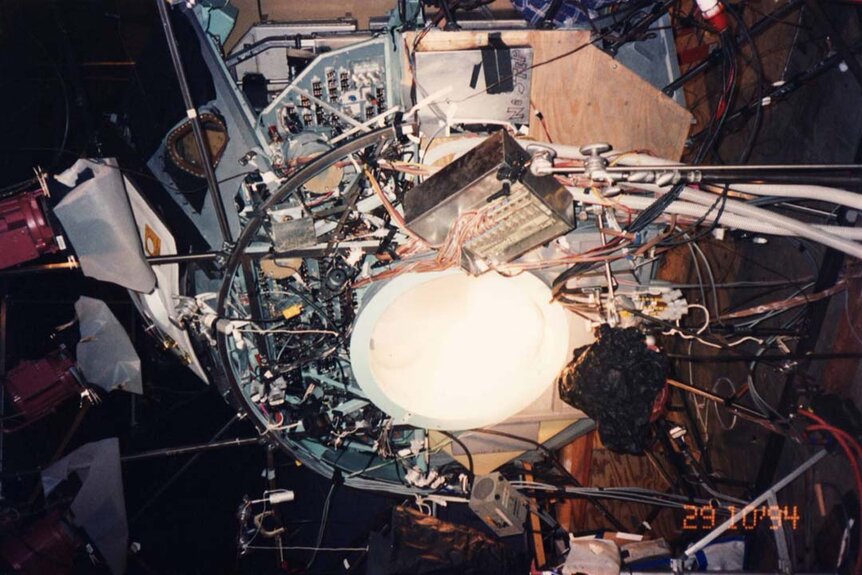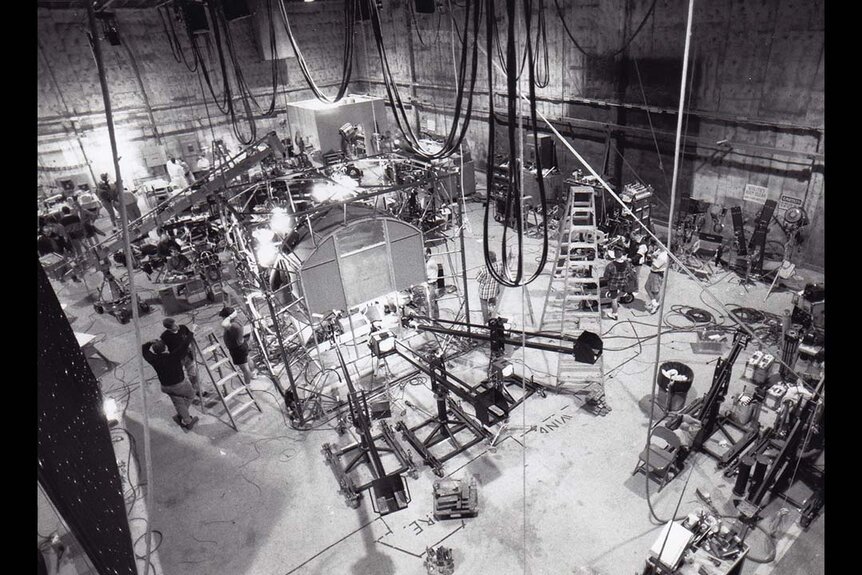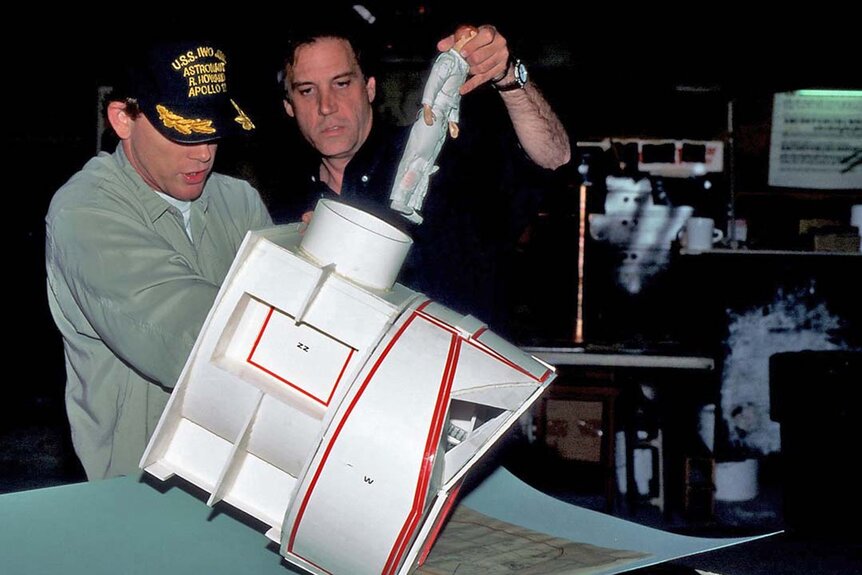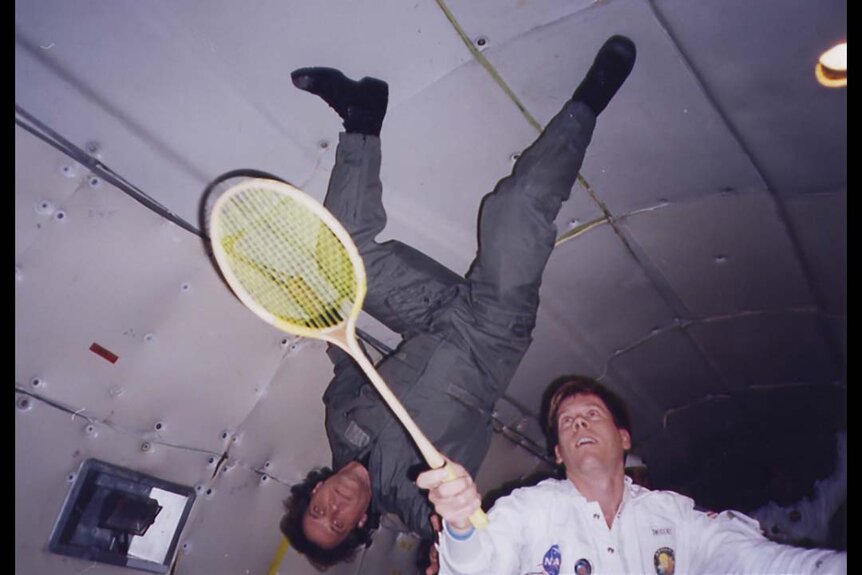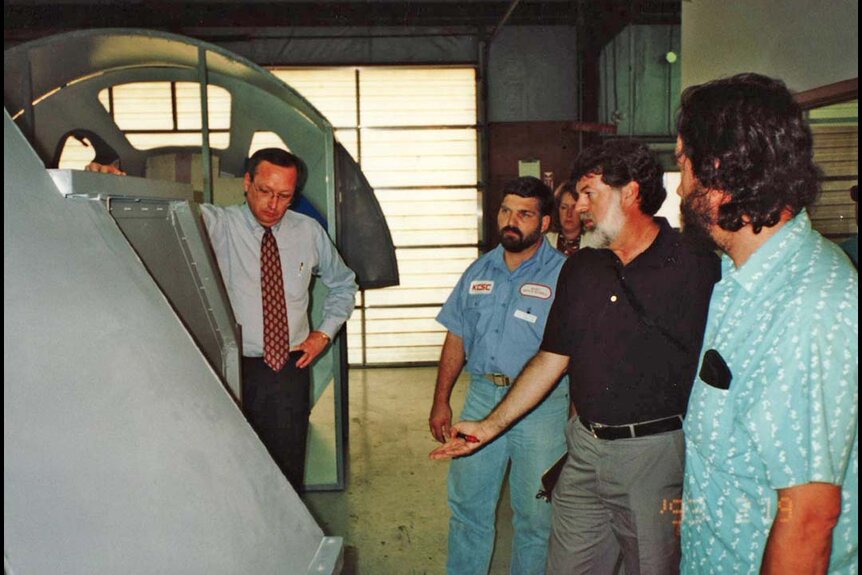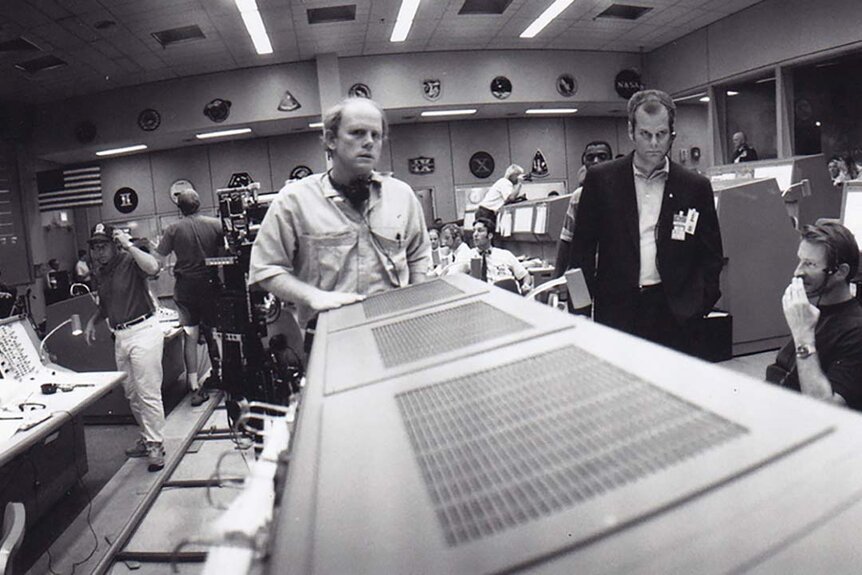Create a free profile to get unlimited access to exclusive videos, sweepstakes, and more!
'Apollo 13' Cinematographer and Production Designer Reflect on Ron Howard's Inspiring Masterpiece
"Houston, we have a problem!"
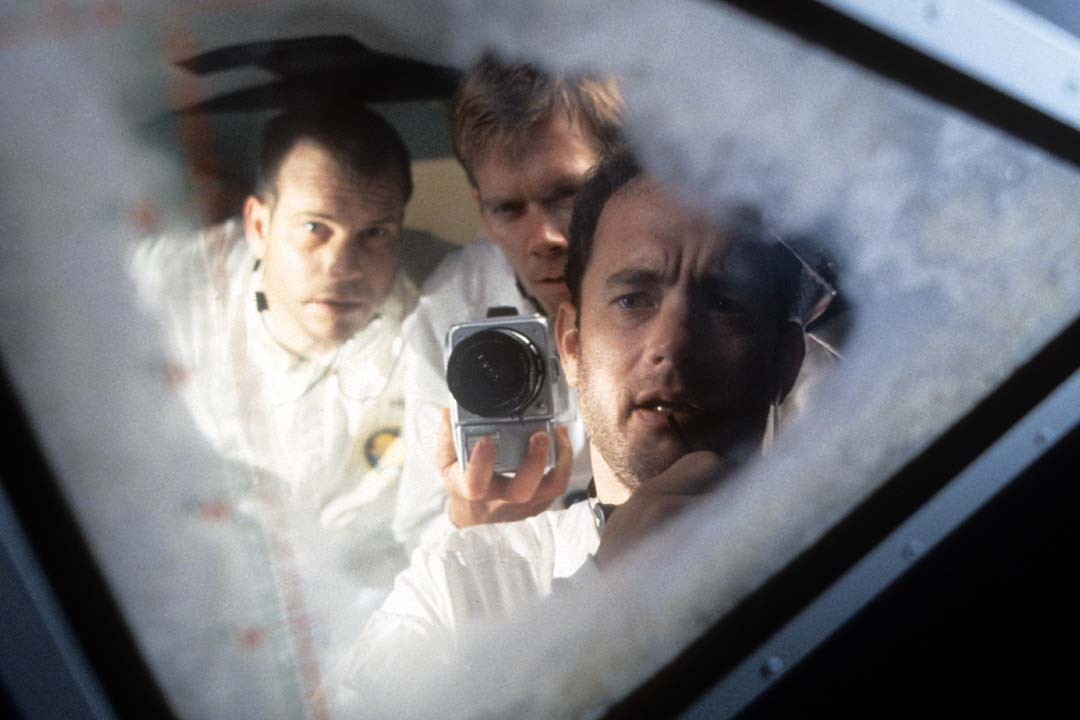
By 1994, cinematographer Dean Cundey had been a part of three momentous films: Back to the Future, Who Framed Roger Rabbit, and Jurassic Park. In addition to embedding themselves deep within the cultural zeitgeist these iconic blockbusters also represented watershed moments in the evolution of visual effects.
"In each case, you don't just follow a script and then some instructions on how to do it. There's the script and it poses…not a problem, but an opportunity," Cundey explains over Zoom. "So you get to think about and invent new techniques or variations on techniques. I’ve been very fortunate to be involved with films that allowed us to find new ways to create the illusions and to embellish the illusion and so forth."
RELATED: Best Sci-Fi Movies to Stream on Peacock
When director Ron Howard came knocking with the offer of a historical drama about the famous Apollo 13 astronauts — Commander Jim Lovell, Command Module Pilot Jack Swigert, and Lunar Module Pilot Fred Haise — who defied the odds of a disastrous 1970 mission to the moon, the effects-heavy director of photography needed to rethink his toolbox.
"Both he I had the same point-of-view, [that] it was a film about an actual event, as opposed to science fiction with spaceships and monsters," Cundey says. "So his feeling, and mine, was to portray it with as much real reality as possible. Therefore, we would make sure that the audience always felt the camera and [that] they were inside the capsule. We were never outside of the fourth wall."
Not exactly a documentary-style approach, but "a real portrayal approach to shooting all of it," he adds. "To try to make the audience feel like they were involved and not looking at glitzy stuff. That they were sitting there and watching what happens with all of these folks."
Before Howard and his DP could shoot anything, they needed a litany of detailed sets. Enter production designer Michael Corenblith, who had hoped to work with Howard several years earlier on Backdraft, "but our timing didn’t work out," he tells SYFY WIRE email. With no modern internet to speak of, Corenblith and his team had to do things the old-fashioned way: by scouring back issues of Life Magazine, or else taking a shuttle-load of pictures and measurements at NASA's Mission Control Center in Houston, Texas.
"We were aiming for the highest degree of fidelity we could muster and our methods of research were guided by the resources we could locate and the individual environments we were trying to replicate," he says. Failure, in other words, was not an option.
When it came time to recreate the Command and Lunar Modules, for instance, the production designer reached out to SpaceWorks, a Kansas-based company known for pristine museum replicas of NASA machinery. "They had the plans and specifications, as well as the means to machine and fabricate everything we would need."
Cundey then "asked them to modify the capsules a little to make it so that the walls would come off, but support the outside of it with a steel structure," reveals the cinematographer. "We could pick up the capsule, flip it over on its top or side or front, so that we could create a sort of illusion of weightlessness."
In addition, the crew logged over three hours of flight time on the KC-135 (aka the "Vomit Comet"), a special NASA airplane capable of recreating brief bursts of zero-gravity conditions for astronauts-in-training. The module sets were augmented in order to fit inside the fuselage of the vessel. "When that was mounted inside the plane, the weightless stuff that we were able to do was very impressive," Cundey says. "Including objects that float and they can hit them and they spin away. All of those things that look and are authentic."
Nowadays, any film set in outer space would simply utilize a more time and cost-effective system of harnesses and cables that are easily removed by CG artists in post-production. "It’s easier to do now than what we went through to make it make it authentic," Cundey continues. "As movies get old and as new ones are developed [with] new technologies, it’s easy to look back at Apollo 13 and say, ‘Yeah… so what? I've seen a lot of floating objects and floating people.’ Well, no," Cundey asserts. "At the time, it was not computer-generated or wire removal. It was, in fact, a real experience."
A gung-ho ensemble of committed actors — Tom Hanks (Lovell), Bill Paxton (Haise), Kevin Bacon (Swigert), Gary Sinise (original Command Module pilot Ken Mattingly, who was replaced with Swigert days before the mission took place), and Ed Harris (Gene Kranz, the uncompromising flight director who helped get the men home safely) — went a long way in selling the piece.
"Tom Hanks was very much behind the project. He was very much interested in doing something new and different. And he was completely behind doing all of this practical stuff," Cundey says. "He was sort of the guiding force; he was interested in it and trying to do it so well, that the other actors — Kevin and and Bill — were completely committed. Rather than saying, ‘Okay, I'm an actor, I showed up today, what do I say?,' there was an effort by all of them to really understand, blend in, and adopt the mindset and the science that's involved in creating all of this and understanding it completely."
It also helped that a number of key figures in the Apollo 13 mission, including Lovell and Kranz, were available to serve as technical consultants. Corenblith, for example, got to witness Kranz's resourcefulness firsthand early on in production. "After our first meeting in Mission Control, everyone had left for a nearby local restaurant. The last to leave were me and Gene Kranz," the production designer remembers. "While riding with him, his truck breaks down and we wind up under the hood, with my holding a screwdriver into the carburetor, while he gets the engine to start… experiencing his practicality in problem-solving after knowing him for 10 minutes."
He goes on to recall another amusing anecdote of the real world colliding with movie magic: "During ‘Mission Control School’ that was conducted by our technical advisors for our cast, the technical advisors kept forgetting that they weren’t in Houston, and continued to be surprised when the 'Men’s Room' door they had entered countless times in Houston, only opened to a blank stage wall."
Apollo 13 landed in theaters on June 30, 1995 to near-universal acclaim from critics and general audiences. The committed performances, obsessive attention to detail, and an inspiring message about the resilience of the human spirit yielded over $355 million at the worldwide box office and two Oscar victories (out of nine nominations).
"I feel that our underlying affection for and connection to the period transcends mere nostalgia and depicts the era and the technology both faithfully, and lovingly," says Corenblith, who was nominated for Best Art Direction alongside set decorator Merideth Boswell. "The authenticity of 1970 that we created 24 years after the fact remains a supportive canvas for this story more than 25 years later."
The production designer went on to reunite with Howard for a number of projects — including Ransom (1996), EDtv (1999), How the Grinch Stole Christmas (2000), and Frost/Nixon (2008). The dramatized depiction of the famous television interview between David Frost and impeached president Richard Nixon became the duo's second collaboration to land an Oscar nomination for Best Picture.
"Having worked with Ron on projects with a variety of genres and periods, what I have learned is that his combination of diligent preparation and intelligent empathy for each of the characters in his screenplays always leads to memorable collaborations for all involved," he concludes.
Cundey never got a chance to work with Howard on another film, but still considers Apollo 13 one of his proudest career achievements alongside Back to the Future, Who Framed Roger Rabbit, and Jurassic Park. "I've been fortunate to work on a number of films that succeeded with an audience because of the illusion and magic that we employed."
Apollo 13 is now streaming on Peacock.
